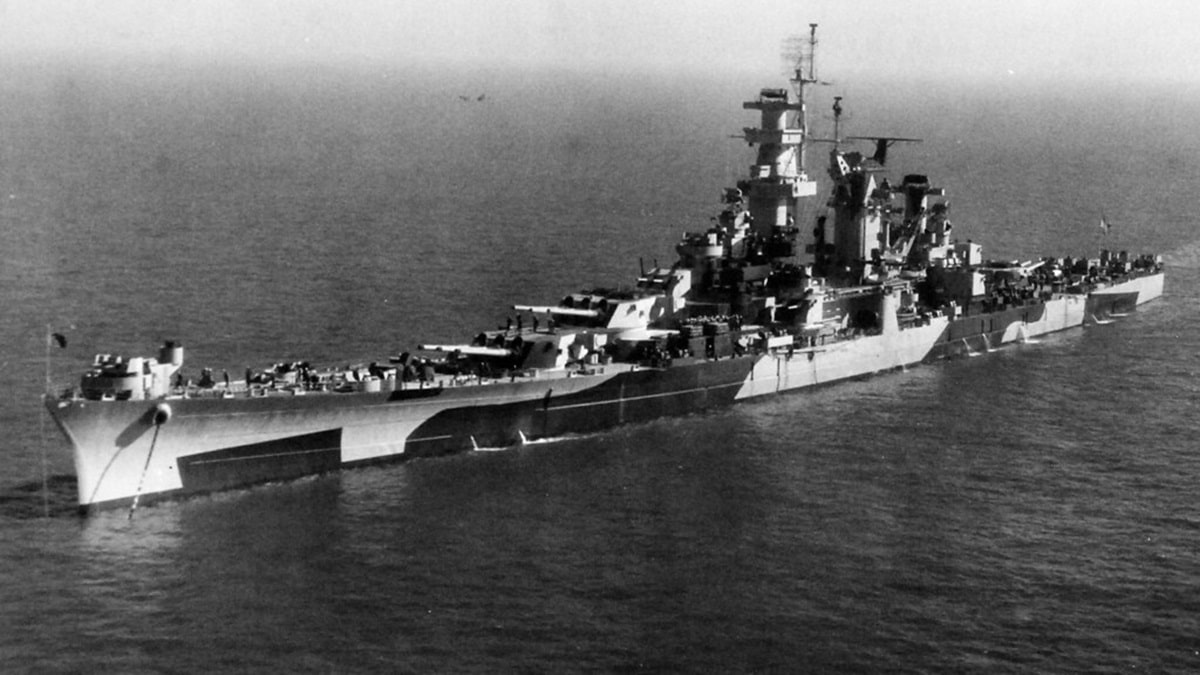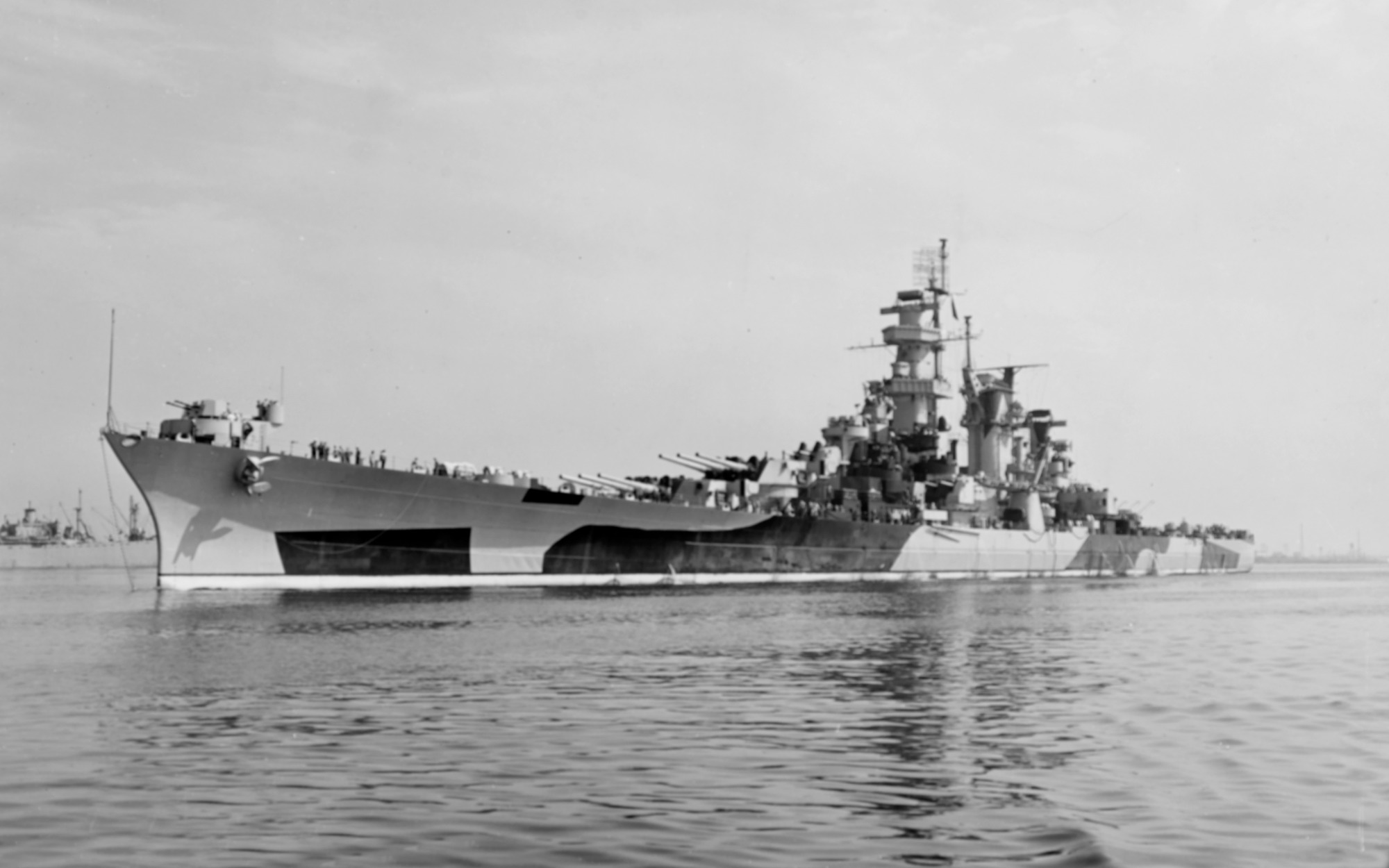Alaska-Class: The Navy's Last Battlecruisers Were Powerhouses
Before Alaska became a state, the U.S. Navy named a new fleet of battlecruisers in its honor. The Alaska class included six planned ships, but only the USS Alaska and USS Guam were completed. Built to counter German and Japanese threats, these ships were significantly larger than previous cruisers.
Summary and Key Points: Before Alaska became a state, the U.S. Navy named a new fleet of battlecruisers in its honor. The Alaska class included six planned ships, but only the USS Alaska and USS Guam were completed. Built to counter German and Japanese threats, these ships were significantly larger than previous cruisers.

-The USS Alaska, measuring 808 feet and displacing 34,000 tons, featured formidable armament, including nine 12-inch guns.
-Despite their potential, the Alaska and Guam were primarily used for anti-aircraft defense during WWII. The USS Alaska earned three battle stars but was decommissioned and scrapped in 1960.
The USS Alaska: A Colossal Battlecruiser with a Short-Lived Legacy
Before Alaska officially became a state, the U.S. Navy designed a new fleet of battlecruisers that it named in the territory's honor.
Six ships were initially planned for the class, but only two were built. The lead ship of the class, the USS Alaska, was laid down in 1941, followed by the USS Guam. These ships were designated as battlecruisers when they were introduced into service, since they were much larger than the Navy’s existing cruisers at the time.
The origins of the Alaska class can be traced back to the early 1930s. The Navy prioritized the construction of vessels capable of going up against Nazi Germany’s Deutschland-class cruisers, known as “pocket battleships.” Imperial Japan at the time was also rumored to be developing a new large cruiser class. Due to the guidelines outlined in the interwar periods under the Washington Naval Treaty, prior ship classes designed by the U.S., Britain, Japan, France, and Italy had been limited to 10,000 tons of displacement. But larger ships were returning to the seas.
Both Alaska and Guam were built by the New York Shipbuilding Corporation. Construction of the third ship in the class, Hawaii, was canceled in 1947 when she was roughly 84% complete. The remaining three ships that were planned – the Philippines, Puerto Rico, and Samoa, were eventually canceled.
The Alaska and Guam never fulfilled their planned roles. After Imperial Japan attacked Pearl Harbor in 1941, the U.S. Navy shifted its focus to the development of aircraft carriers.
Introducing USS Alaska
The Alaska measured roughly 808 feet long, with a beam length of 91 feet. The hefty battlecruiser displaced 29,779 long tons, and more than 34,000 tons at full load.
Since the Alaska was much larger than her predecessors, she was able to sport a more formidable armament. The battlecruiser was armed with a main battery of nine 12-inch L/50 Mark 8 guns in three triple gun turrets. A secondary battery consisting of twelve 5-inch L/38 dual-purpose guns in six twin turrets was also incorporated. As detailed by National World War II Museum curator James Linn, “Standard American heavy cruiser design, like the 673 feet-long, 14,500-ton Baltimore-class, were armed with (9) 8” guns, (12) 5” guns, and (24) 20mm guns. By comparison, the Alaska’s were 808 feet-long and weighed 29,771 tons. They were armed with (9) 12” guns, (12) 5” guns, (56) 40mm guns, and (34) 20mm guns.”
Alaska-Class: Service History
Following her commissioning, the USS Alaska sailed toward Hampton Roads before beginning her shakedown cruise in the Chesapeake Bay. She then returned to the Philadelphia Navy Yard to be fitted with the new Mk 57 fire control directors for her 5-inch guns. Alaska would sail for Hawaii in 1945 where the ship would be assigned to Task Group 12.2 based out of Pearl Harbor. Alaska, alongside her sister ship Guam, was tasked with providing anti-aircraft defense for the Navy’s carriers.

The Alaska first saw combat in the Second World War in March 1945 when she participated in airstrikes over Okinawa. Japan launched a massive Kamikaze attack during this battle.
Subsequent events have been outlined by Naval Encyclopedia: “When USS Franklin was badly damaged by bomb hits and a kamikaze, USS Alaska and USS Guam, now in the same unit, as well as two other cruisers and destroyers were detached, forming 58.2.9 in order to escort the crippled Franklin to Ulithi. They were attacked and USS Alaska claimed another D4Y. It happened that gunfire from one of her 5-inch guns accidentally caused flash burns on several men nearby which became her only casualties of war. She became fighter director due to her better air search radar, vectoring fighters in interception along the way, and downed a Kawasaki Ki-45 Toryu.”

In the later days of the war, the Alaska was assigned to Cruiser Task Force 95. Overall, the battlecruiser was awarded three battle stars for her performance during the war. By the end of the 1950s, the Navy considered converting Alaska and Guam into guided missile cruisers. However, the costly nature of such a conversion was nixed by the service. The Alaska was officially stricken from the Naval Vessel Registrar in 1960 and was broken up for scrap.
About the Author: Maya Carlin
Maya Carlin, National Security Writer with The National Interest, is an analyst with the Center for Security Policy and a former Anna Sobol Levy Fellow at IDC Herzliya in Israel. She has by-lines in many publications, including The National Interest, Jerusalem Post, and Times of Israel. You can follow her on Twitter: @MayaCarlin.
Email the author or contact us: [email protected].
All images are Creative Commons.


